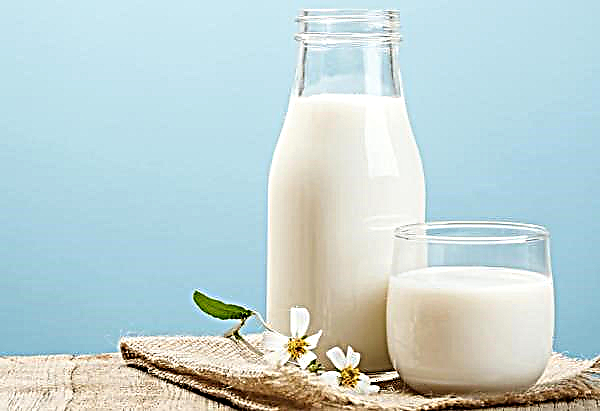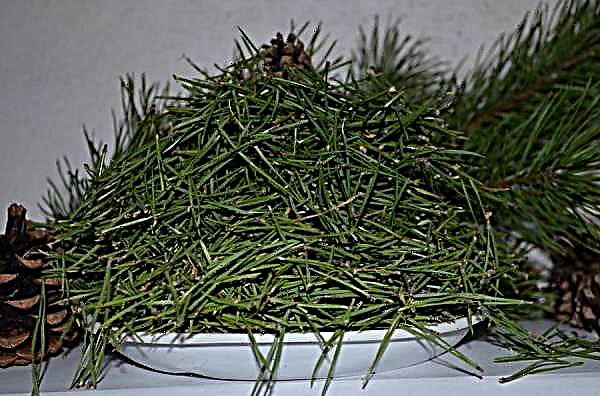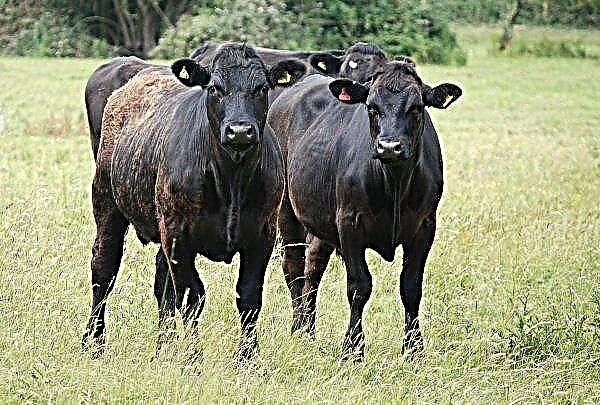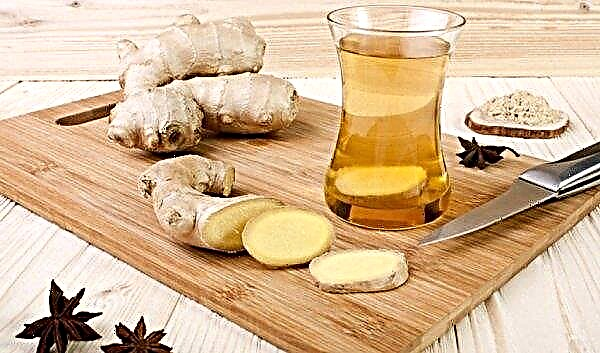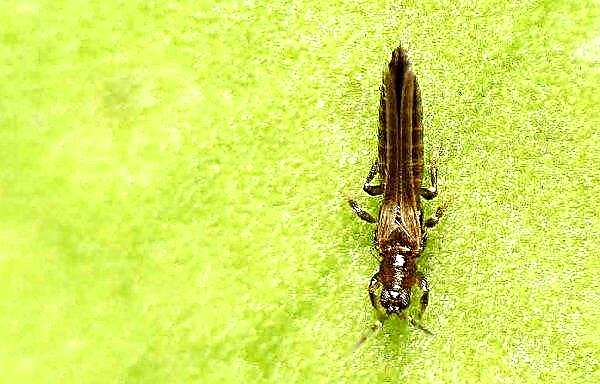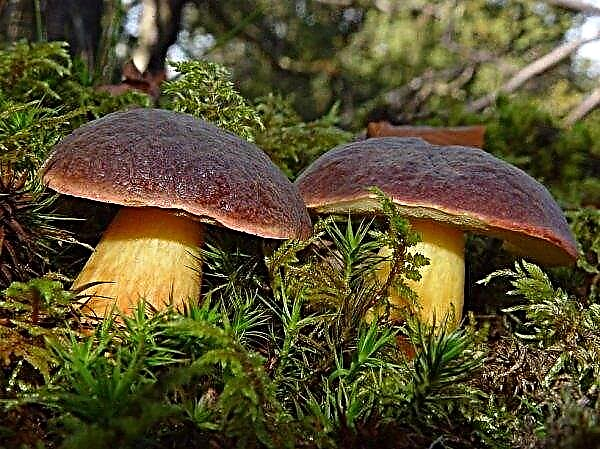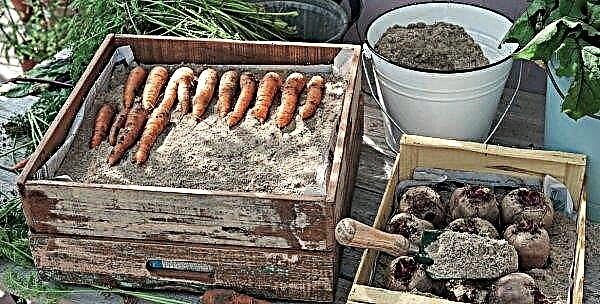Accustomed to using dill as a spice, we do not think about the fact that, in addition to excellent taste, the plant also has a wide range of properties useful to the human body. At first glance, a simple culture has its own characteristics and secrets. This article suggests familiarizing yourself with the detailed characteristics of a plant, its beneficial properties and contraindications, application features, as well as basic growing rules.
Important! It is necessary to add dill to an already prepared dish, since during boiling the plant completely loses its spicy aroma.
Dill is a vegetable or not
Before proceeding with the description of the culture, it is necessary to find out whether dill still applies to vegetables or greens. This is a vegetable crop belonging to the annual herbaceous plants of the genus Umbrella. This family includes only one species - odorous dill, popularly nicknamed the gardener. Under the natural conditions of growth, it can be found in Asia, and as a garden plant, it is cultivated throughout the world. Simply put, the plant is a grass with a high stem, in which only side shoots are edible, and at the top there is a blossoming flower that looks like an umbrella. Based on these characteristics, we can safely attribute the culture to the so-called "spicy vegetables", which also include green onions and parsley, which are well known to us. The conclusion suggests itself: dill is a herbaceous crop used as one of those agricultural products that are commonly called vegetables.
Simply put, the plant is a grass with a high stem, in which only side shoots are edible, and at the top there is a blossoming flower that looks like an umbrella. Based on these characteristics, we can safely attribute the culture to the so-called "spicy vegetables", which also include green onions and parsley, which are well known to us. The conclusion suggests itself: dill is a herbaceous crop used as one of those agricultural products that are commonly called vegetables.
Description and characteristics of the plant
Dill is one of the annual herbaceous plants, the height of which varies from 45 to 130 cm. In addition to Asia, Egypt and Southern Europe, where it has been grown for more than one century, are also considered to be the birthplace of the plant. The stem is quite dense, single, the leaves are dark green, have a characteristic aroma rich in culture. As the fruits of dill are grayish-brown ovoid seeds. The shoots are erect, their average height reaches 30 cm.
Did you know? For ancient people, dill at first did not represent absolutely no nutritional value; they used it for decorative purposes. For example, the ancient Greeks and Romans, along with roses, presented a bouquet of dill to their lovers as a sign of eternal love and devotion, and the ancient winners, in addition to laurel wreaths, were also awarded with dill wreaths. By spice it was also customary to decorate the houses and graves of noble people.
The mass of one plant does not exceed 15 g. The flowering period of the crop falls on June-July, and it reaches full ripening by the end of July - the beginning of September. Quality spice is characterized by medium size, hardness and the absence of defects in the form of yellow or dark brown patches.
To date, the plant has found wide application as a seasoning, its use is possible both in fresh and in salt and dried form, adding to a variety of dishes. In addition to food, the plant is also popular in soap, canning and chemical industries.
Chemical composition and calorie content
Due to the low calorie content - only 42 kcal per 100 g, dill has acquired the status of one of the most suitable vegetables for diet food. The plant also contains a huge amount of vitamins, making it not only useful, but also an indispensable product for the fight against chronic diseases.
The predominant component in the composition of the spice is vitamin C - it is contained in the vegetable for about 100 g. It is with its help that redox reactions and the functioning of the immune system occur, and its lack is fraught with a general deterioration in well-being and nosebleeds due to the fragility of blood capillaries.
Did you know? The ancient Egyptians used a dill decoction to relieve headaches. By the way, it is thanks to the plant that the well-known cucumber pickle so effectively helps to get rid of a hangover in the morning.
A smaller amount in dill also contains vitamins A, PP and group B, however, together they create a fairly powerful antioxidant that can prevent the appearance of most diseases. The chemical composition of the plant is also characterized by an increased content of fiber, proteins, fats, carbohydrates and minerals.
The nutritional value:
- calorie content - 42 kcal;
- proteins - 2.6 g;
- fats - 0.5 g;
- carbohydrates - 7.3 g;
- water - 85.6 g.
Vitamins:
- A - 753 mcg;
- B1, thiamine - 0.04 mg;
- B2, riboflavin - 0.1 mg;
- B5, pantothenic acid - 0.30 mg;
- B6, pyridoxine - 0.20 mg;
- C, ascorbic acid - 100 mg;
- E, alpha tocopherol - 1.8 mg;
- PP - 1.5 mg.
Trace elements:
- iron - 1.9 mg;
- Manganese - 1.265 mg;
- copper - 150 mg;
- zinc - 0.90 mg.
Macronutrients:
- potassium - 340 mg;
- calcium - 225 mg;
- magnesium - 73 mg;
- sodium - 40 mg;
- sulfur - 35.7 mg;
- phosphorus - 94 mg.

Dill Properties
In addition to its exceptional taste, the spicy vegetable also boasts an enviable list of medicinal properties for the human body. It is because of this that it began to be widely used to eliminate seemingly incurable ailments. Consider the beneficial properties and contraindications to the use of plants in more detail.
Benefit
- The list of useful properties of the spice is quite impressive:
- helps to increase appetite, improves metabolism and the gastrointestinal tract;
- Being a natural antioxidant, it perfectly removes stress and nervous tension, and also stabilizes the cardiovascular system. It is also useful to use the plant for insomnia, hypertension, diseases of the stomach and kidneys and a number of other diseases;
- due to its low calorie content and high vitamin content, dill is an invaluable product in dietary nutrition. It is recommended for use by nursing mothers, as it helps to enhance lactation;
- It has an analgesic effect, so it can be used to relieve ulcerative pain;
- the high content of essential oils helps relieve sputum when coughing;
- widely used in cosmetics, perfectly removing redness and various kinds of inflammation on the skin.
Important! It is not recommended to plant dill after celery. The best predecessors for the crop are cucumber, cabbage, onions, carrots and garlic.
Harm and contraindications
Dill can cause significant harm only in case of abuse. If you use it in unlimited quantities, you may experience pain in the stomach and intestines, as well as temporary visual impairment and a sharp breakdown. However, it is unlikely that anyone would think of eating this plant in bunches. Like other vegetables, he has a number of contraindications.
- It is necessary to exclude spice from your diet for people:
- with increased sensitivity to essential oils;
- allergy sufferers;
- with hypotension, since the ability of dill to lower blood pressure can be fatal.
Application features
The range of spices is quite extensive, and this is due to both its taste and numerous beneficial properties. First of all, dill is actively used in medicine - doctors recommend including it in the diet with diet for obesity, diseases of the liver, kidneys and bladder. The seeds of the plant are used as an infusion for intestinal diseases, exerting an antispasmodic effect and reducing its peristalsis. Dill infusion is also effective as an expectorant and diuretic. The plant is widely used in cooking - due to the rich spicy taste and aroma it can be used both in fresh and in dried and salted form. Dill is used when added to salads, soups and various meat and fish dishes.
Dill infusion is also effective as an expectorant and diuretic. The plant is widely used in cooking - due to the rich spicy taste and aroma it can be used both in fresh and in dried and salted form. Dill is used when added to salads, soups and various meat and fish dishes.
It perfectly complements and gives a piquant taste to young potatoes, cheese, cottage cheese, sauerkraut. The seeds of the plant can also be aromatized with vinegar, tea and marinades, and dill oil is very popular in the creation of confectionery. The increased content of phytoncides in the plant makes it possible to use it when salting vegetables and preserving them from mold and premature spoilage.
Essential oil extracted from dill is no less multifunctional - it is used in almost all industries, from food to soap. Dill also found its use in perfumes - with the help of extracts from its seeds, a huge number of perfume compositions are created, and they are also added to creams and toothpastes.
The basic rules of growing
The unpretentiousness of the plant allows it to be cultivated in almost all regions and climatic conditions, but far from everyone grows dense, juicy greens. The fact is that most vegetable growers do not take into account the characteristics of the culture, without which it is almost impossible to achieve good results. Failure to comply with agricultural practices can lead to poor seedlings and poor crop yield even in the case of sowing healthy and fresh seeds.
To dill in a timely manner pleased with its spicy rich aroma, it is necessary to adhere to the following simple rules:
- The plant prefers a warm and moderately humid climate, and therefore the culture is best grown by the seedling method, sowing in the early stages to protect it from frost.
- Seeding time for seedlings should vary from early March to mid-April, and it can be planted in open ground at the end of May.
- Photophilous culture does not tolerate drafts and shade, therefore it is necessary to plant it only in a well-lit and sheltered from the wind section.
- Before transplanting, it is necessary to introduce humus into the soil (1/3 bucket per 1 m²) or, in its absence, a diluted mullein and add one tablespoon of nitrophoska.
- The distance between seedlings should be at least 5 cm, and the interval between rows should be 25-30 cm.
- The first time the plants must be covered with a film until the final establishment of favorable weather conditions.
- Watering should be moderate - 1-2 times a week.
- Be sure to remove weeds, loosen and hill the soil.
- Harvesting is better to start from the moment inflorescences are formed on the plant — during this period, the height of the bush will be within 35–40 cm.
- It is recommended to store it in dried form, but you can also keep it in the refrigerator.
Today, dill is deservedly one of the most popular vegetables widely used in all industries. For his benefit and excellent taste, he acquired the status of one of the favorite plants of gardeners, and given its unpretentiousness and ease of cultivation, it is also the most common.


